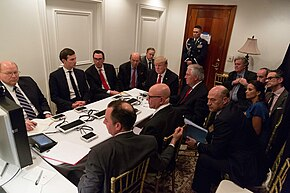
The Sensitive Compartmented Information Facility (SCIF) is a secure area used for handling classified information. Let’s delve into the rules and guidelines associated with SCIFs:
- Purpose:
- The primary purpose of SCIFs is to establish policies for accessing, safeguarding, and storing classified information and material within a U.S. General Services Administration (GSA)-controlled SCIF.
- This includes documents printed and stored within the SCIF.
- Background:
- Several authorities govern the protection of facilities, personnel, and classified information in GSA-controlled SCIFs. These authorities include:
- Executive Order (EO) 13526: Addresses “Classified National Security Information.”
- EO 12333: Pertains to “United States Intelligence Activities.”
- Code of Federal Regulations Title 32, Part 2001: Covers “Classified National Security Information.”
- Intelligence Community Directives (ICDs): Various ICDs provide guidance on protection, unauthorized disclosure, personnel security standards, and SCIF facilities.
- Several authorities govern the protection of facilities, personnel, and classified information in GSA-controlled SCIFs. These authorities include:
- Scope and Applicability:
- This order applies to all GSA personnel and visitors to a GSA-controlled SCIF.
- It does not apply to other agencies using a GSA-controlled SCIF unless specified in agreements.
- Legal authorities of the GSA Office of Inspector General and the Civilian Board of Contract Appeals remain unaffected.
- Policy:
- GSA-controlled SCIFs fall under the responsibility of the GSA Office of Mission Assurance (OMA).
- Only individuals with appropriate security clearance, a need-to-know basis, and within a GSA-controlled SCIF may handle, discuss, and store classified information and material.
- Responsibilities:
- Associate Administrator of OMA:
- Leads the SCI Security Program, ensuring compliance with policies and procedures.
- Safeguards equipment, systems, and printed documents within GSA-controlled SCIFs 1.
- Associate Administrator of OMA:
Remember, SCIFs play a crucial role in maintaining national security by safeguarding sensitive information and facilitating secure communication among authorized personnel.

The Sensitive Compartmented Information Facility (SCIF) is a secure area used for handling classified information. Let’s delve into the rules and guidelines associated with SCIFs:
- Purpose:
- The primary purpose of SCIFs is to establish policies for accessing, safeguarding, and storing classified information and material within a U.S. General Services Administration (GSA)-controlled SCIF.
- This includes documents printed and stored within the SCIF.
- Background:
- Several authorities govern the protection of facilities, personnel, and classified information in GSA-controlled SCIFs. These authorities include:
- Executive Order (EO) 13526: Addresses “Classified National Security Information.”
- EO 12333: Pertains to “United States Intelligence Activities.”
- Code of Federal Regulations Title 32, Part 2001: Covers “Classified National Security Information.”
- Intelligence Community Directives (ICDs): Various ICDs provide guidance on protection, unauthorized disclosure, personnel security standards, and SCIF facilities.
- Several authorities govern the protection of facilities, personnel, and classified information in GSA-controlled SCIFs. These authorities include:
- Scope and Applicability:
- This order applies to all GSA personnel and visitors to a GSA-controlled SCIF.
- It does not apply to other agencies using a GSA-controlled SCIF unless specified in agreements.
- Legal authorities of the GSA Office of Inspector General and the Civilian Board of Contract Appeals remain unaffected.
- Policy:
- GSA-controlled SCIFs fall under the responsibility of the GSA Office of Mission Assurance (OMA).
- Only individuals with appropriate security clearance, a need-to-know basis, and within a GSA-controlled SCIF may handle, discuss, and store classified information and material.
- Responsibilities:
- Associate Administrator of OMA:
- Leads the SCI Security Program, ensuring compliance with policies and procedures.
- Safeguards equipment, systems, and printed documents within GSA-controlled SCIFs 1.
- Associate Administrator of OMA:
Remember, SCIFs play a crucial role in maintaining national security by safeguarding sensitive information and facilitating secure communication among authorized personnel.
Source: BingAI


You must be logged in to post a comment.